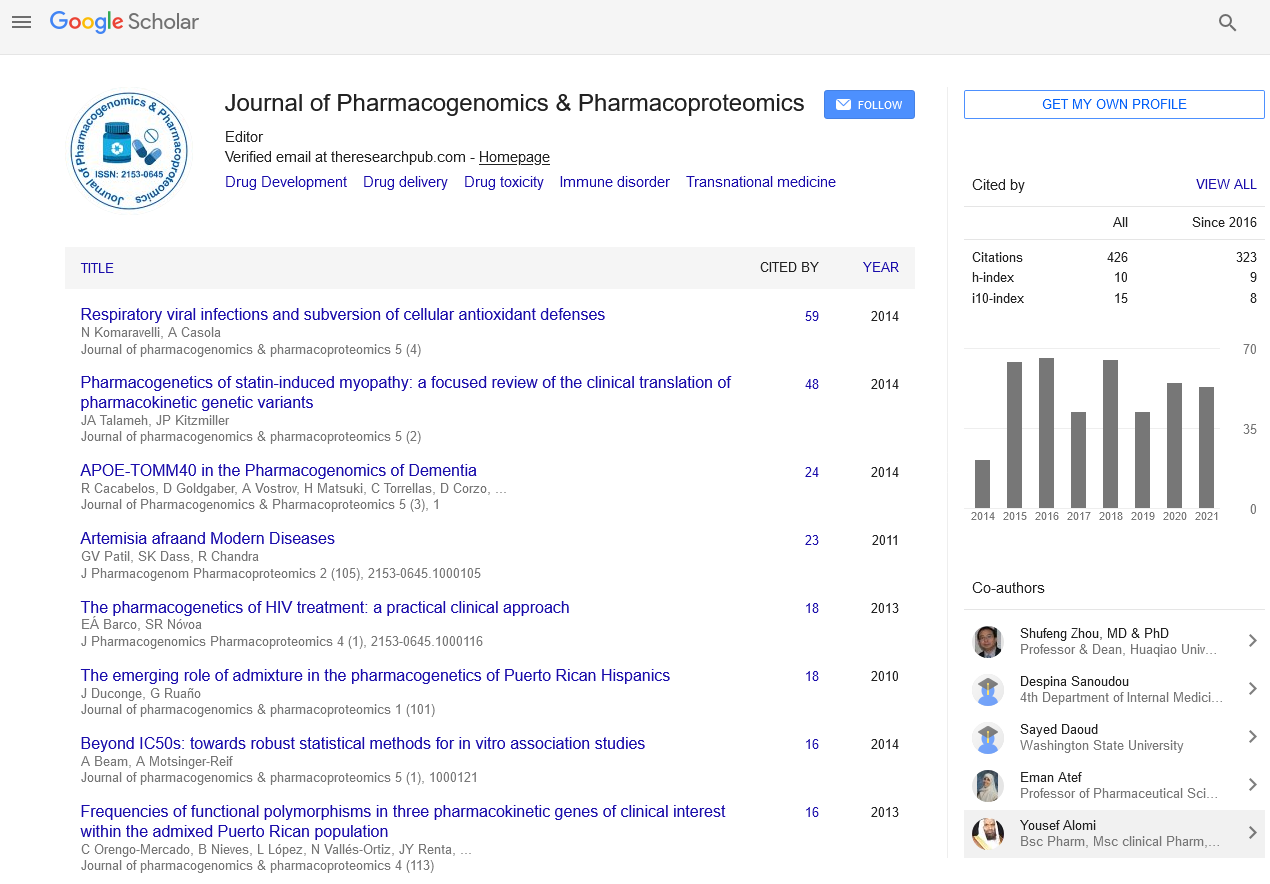Indexed In
- Open J Gate
- Genamics JournalSeek
- Academic Keys
- JournalTOCs
- ResearchBible
- Electronic Journals Library
- RefSeek
- Hamdard University
- EBSCO A-Z
- OCLC- WorldCat
- Proquest Summons
- SWB online catalog
- Virtual Library of Biology (vifabio)
- Publons
- MIAR
- Euro Pub
- Google Scholar
Useful Links
Share This Page
Journal Flyer

Open Access Journals
- Agri and Aquaculture
- Biochemistry
- Bioinformatics & Systems Biology
- Business & Management
- Chemistry
- Clinical Sciences
- Engineering
- Food & Nutrition
- General Science
- Genetics & Molecular Biology
- Immunology & Microbiology
- Medical Sciences
- Neuroscience & Psychology
- Nursing & Health Care
- Pharmaceutical Sciences
Abstract
How single-molecule real-time sequencing can improve the prognosis and genetic counselling in Myotonic dystrophy type 1
Stéphanie Tomé
Myotonic dystrophy type 1 (DM1) results from the expansion of an unstable CTG repeat that usually increases across generations and over time in somatic tissues. CTG repeat instability and DM1 clinical manifestations depend on the length of the repeat itself and the purity of the repeated sequence. The genetic counseling in DM1 is very complex, due to the highly variable clinical presentation and technical difficulties in determining the size and purity of the CTG expansion. We used PacBio Single-Molecule Real-Time sequencing (SMRT) to precisely measure large CTG repeat size and identify sequence interruptions of expanded allele to understand clinical and genetic variability in DM1 patients. We sequenced several DM1 patients with CTG repeat expansions ranging from 130 to > 1000 CTG repeats on the Sequel I and II systems from purified amplicons. We obtained more than 77% full DM1 reads per sample, with >70% of the reads from expanded alleles. The data includes long reads in the expected size range for all samples, including DM1 patients with more than 1000 CTG repeats (Table1and Ref1). SMRT sequencing is very promising to sequence large triplet repeat expansions, to identify CTG repeat interruptions and to estimate somatic mosaicism in DM1 patients. This method can significantly improve the prognosis and counseling offered to patients.
Published Date: 2021-07-08; Received Date: 2021-06-25


